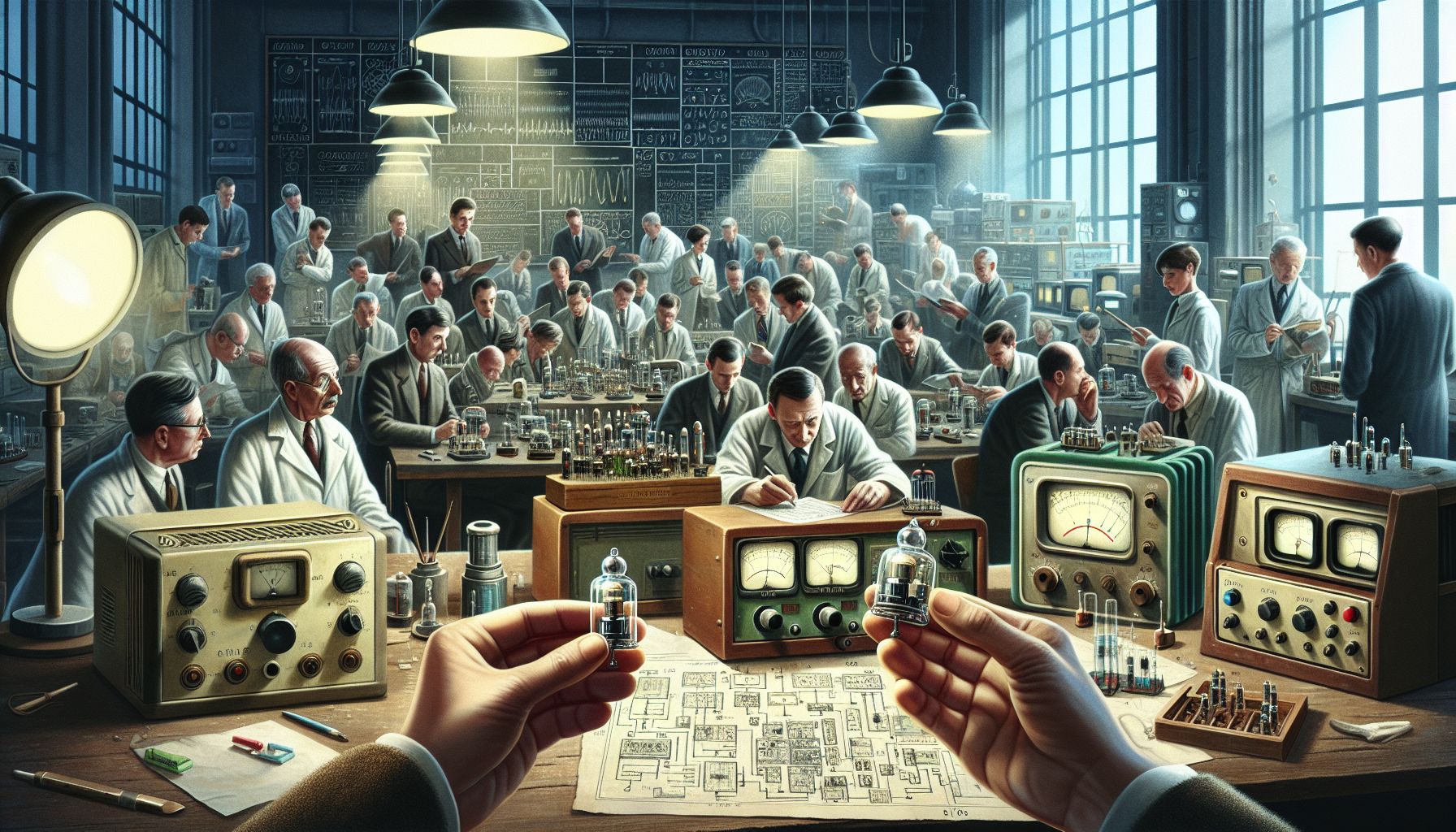📌 Let’s explore the topic in depth and see what insights we can uncover.
⚡ “Before the era of smartphone addiction and wireless wonders, a small device silently sparked a digital revolution. Brace yourself for the untold story of the 1947 transistor, a silent hero birthed in the secretive labs of Bell.”
In 1947, an invention emerged from the famed Bell Laboratories that would forever change the world of technology. This invention, known as the transistor, would go on to act as the fundamental building block for all electronic devices. From computers to smartphones, every piece of technology we use today owes its existence to the humble transistor. So, let’s take a step back in time and explore the fascinating story of how the transistor was invented at Bell Labs. In this blog post, we’ll explore the pioneering work of Bell Labs’ scientists William Shockley, John Bardeen, and Walter Brattain that led to the invention of the transistor. We’ll also delve into the significance of this invention and how it revolutionized the electronics industry and continues to influence our lives even today.
🔬 The Birth of an Idea

Unveiling the Birth of Transistors, 1947 Bell Labs
In the mid-1940s, Bell Labs, a research and development subsidiary of AT&T, was on a mission to find a solid-state alternative to the fragile and energy-consuming vacuum tubes used in telephone exchanges. The team assigned to this task was led by physicist William Shockley and included fellow scientists John Bardeen and Walter Brattain. Shockley had the original idea to use semiconducting materials, such as silicon and germanium, to control the flow of current in a solid-state device. However, his initial attempts to create a working device, known as the “field-effect” transistor, did not succeed. Undeterred, the team decided to take a different approach, and Bardeen and Brattain began working on what would eventually become the first successful transistor.
💡 The Breakthrough: The Point-Contact Transistor
Bardeen and Brattain’s approach involved pressing a tiny piece of gold foil onto a slab of germanium, a semiconducting material. They discovered that by applying a small amount of current to the gold foil, they could control the flow of electricity through the germanium. This was the basic principle of their “point-contact” transistor. On December 23, 1947, Bardeen and Brattain successfully demonstrated their point-contact transistor at Bell Labs. This tiny device, no bigger than a fingernail, marked the end of the vacuum tube era and the beginning of the transistor age.
🎈 The Aftermath: From Invention to Revolution
The invention of the transistor was only the beginning. In the years that followed, Shockley and other scientists at Bell Labs continued to refine and improve upon Bardeen and Brattain’s original design. In 1951, Shockley invented the junction transistor, a more practical and reliable version of the original point-contact transistor. This iteration of the transistor was easier to manufacture and was more durable, making it ideal for mass production. The transistor soon found its way into a variety of electronic devices, from radios and televisions to computers and mobile phones. This tiny device, often described as the “building block” of modern electronics, helped to usher in the digital age that we live in today.
🏆 The Legacy: Nobel Prizes and Beyond
For their groundbreaking work, Bardeen, Brattain, and Shockley were awarded the Nobel Prize in Physics in 1956. Their invention not only revolutionized the field of electronics but also paved the way for the development of other important technologies, such as the integrated circuit and the microprocessor. Today, transistors are everywhere. They’re in our smartphones, our computers, and even in our cars. In fact, a single microchip can contain billions of these tiny devices. Without the transistor, the digital revolution would not have been possible.
🧭 Conclusion
The transistor’s invention at Bell Labs in 1947 marked a pivotal moment in the history of technology. This seemingly simple device transformed the world of electronics and paved the way for the digital age. The work of Bardeen, Brattain, and Shockley continues to influence the technology we use today, from the smartphones in our pockets to the supercomputers that power our digital world. The story of the transistor serves as a powerful reminder of the impact that scientific research and innovation can have on our lives. It’s a testament to the power of curiosity, perseverance, and teamwork. Today, as we stand on the brink of exciting new technological frontiers, we can look back at the invention of the transistor and draw inspiration from the pioneers who dared to dream and turn their dreams into reality.
⚙️ Join us again as we explore the ever-evolving tech landscape.
